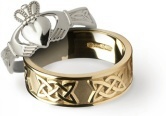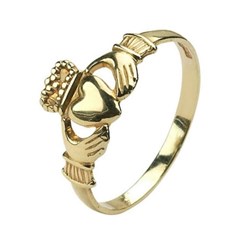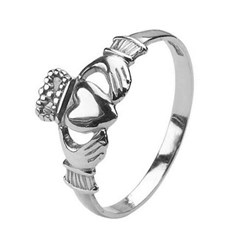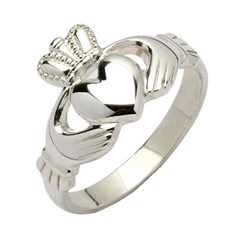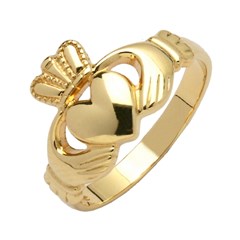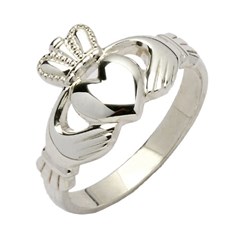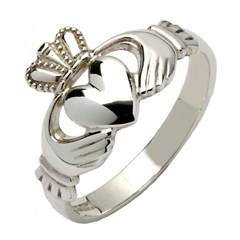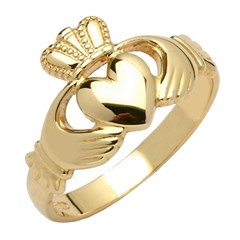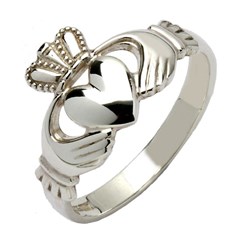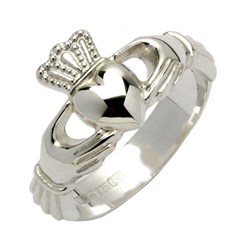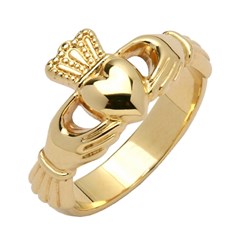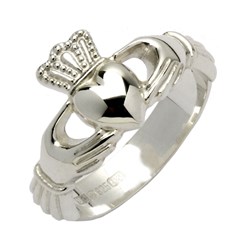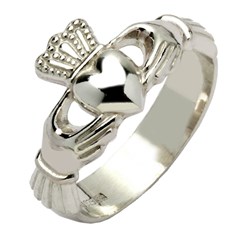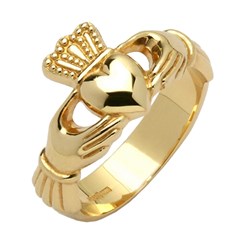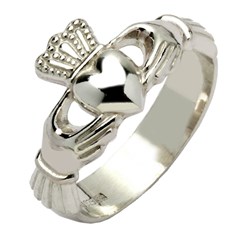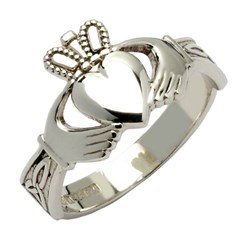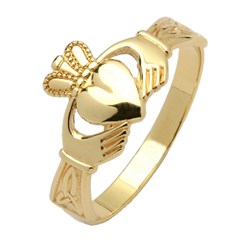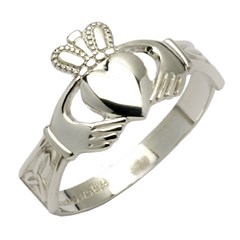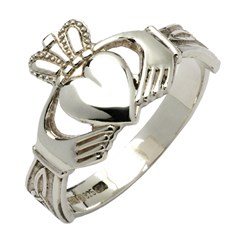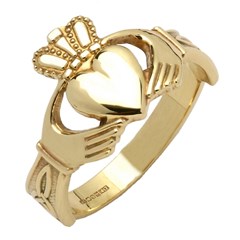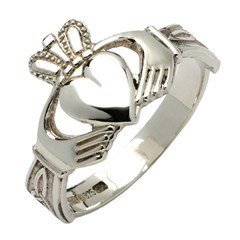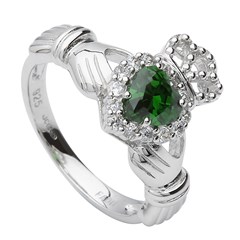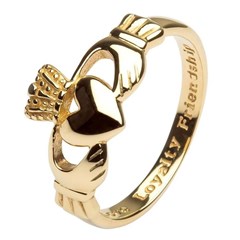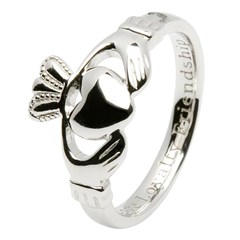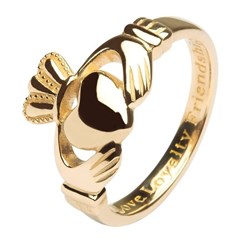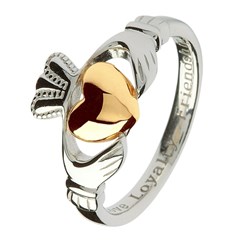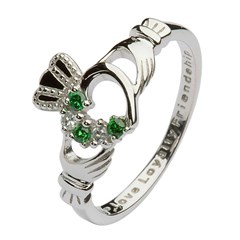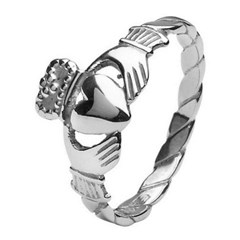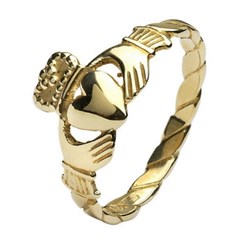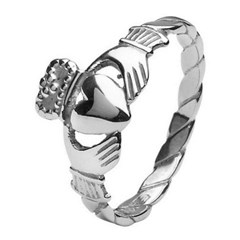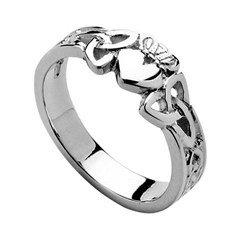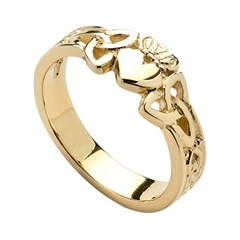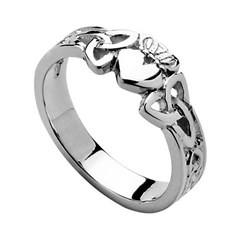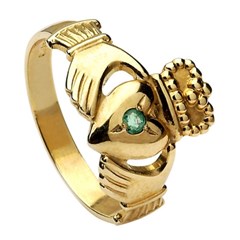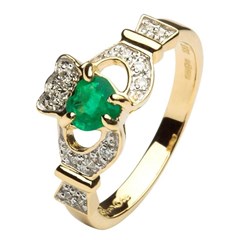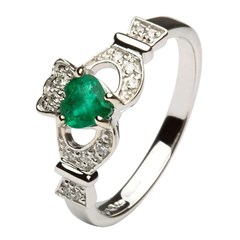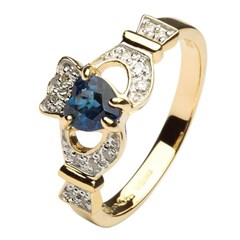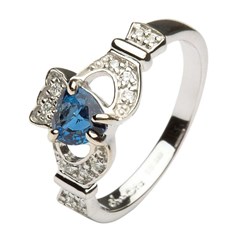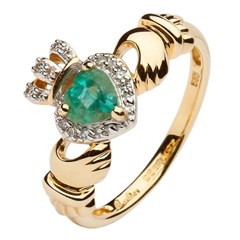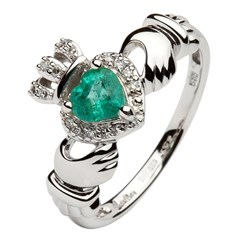Claddagh Rings
The Claddagh ring, or "Ring of Claddagh", originates from the fishing village of Claddagh in Ireland and has been a symbol of love, loyalty and friendship since the mid-1600s. Today, Claddagh jewelry, particularly the Claddagh ring, is popular the world over. Every Claddagh ring bears three distinctive symbols: hands to signify friendship, a heart to symbolize love, and a crown which represents loyalty.
History Of The Claddagh Ring
The original Irish Claddagh rings were made in the village of Claddagh, reportedly by a 17th century man out of legend named Richard Joyce. A native of Galway County, Mr. Joyce was kidnapped on the high seas by swarthy Algerian pirates and sold into slavery in North Africa. He was trained as a goldsmith by his Moorish captors, and when, at long last he earned his freedom, he was one of the finest metalworkers in all the region.Mr. Joyce had become such a talented goldsmith that his former "owner" promised him great riches, and even the hand of his own daughter in marriage, if Richard would stay.
But money was no object to Mr. Joyce, who refused to be any further parted from his true home, the little village of Claddagh, Ireland.
In 1689, he returned to Galway county, and set up shop with his new trade, where, legend has it, he made the first Claddagh ring.
To be sure, there are more theories than just this about the origin of the Claddagh ring.
One highly unlikely, but charmingly fanciful version tells of a good-deed-doing-Darlin' - also from Galway - and also surnamed Joyce.
Legend has it this this Joyce, Miss Margaret Joyce, married a dashing and wealthy Spaniard. But their joy was not to last.
The Dashing Spaniard died, but, not before willing his entire fortune to his lovely bride. Apparently Miss Joyce was not to be unattached for long, since she soon-after married the Mayor of Galway.
As the First Lady of Galway, she used enormous sums of her inherited wealth to build bridges, help the common people, and to all reports, operate as a wonderful benefactress of the town and its citizenry.
Then, one day, toward the end of her life, Miss Joyce was sitting on a beautiful hand-hewn bench, under sunny Irish skies, when, lo! a giant eagle flew past.
He circled her and circled her, and finally, swooped down, opening his beak as he did so. Out of his mouth and into her lap, like a thank you gift from the gods for all her generosity to the little people, fell the first Claddagh ring.
Aye, the second one is probably malarkey. But we like telling it anyway.
Whichever story you personally prefer, we've got lots and lots of beautiful Claddagh rings, made right here in Ireland, to inspire your own storytelling abilities.
Meaning Of The Claddagh Ring
Traditionally, the way in which a Claddagh ring is worn tells others about your romantic status. Worn on the right hand with the heart "facing out" is a subtle way of announcing one's emotional availability and eligibility. Worn on the right hand, but with the heart facing you, communicates that you are in a serious relationship, but not yet engaged. The "turned away" heart, from the point of view of others, lets others know you're not interested in being courted. Worn on the left hand, the same positions indicate the difference between engagement and marriage. Worn with the heart facing out, you're engaged; with the heart facing in, towards the wearer, you're married.For many people, the Claddagh ring is a beautiful and friendly way of letting others know whether or not you're interested in being romantically approached.
If you're interested in authentic Claddagh rings, handmade in their country of origin, then we think you'll be delighted with the wide variety we offer here at Rings from Ireland. Every piece of our Claddagh jewelry is not only authentically Irish in its construction, it's authentically Irish in its hallmark. Every fine piece bears the world-famous imprint of the Irish Assays Office located on the grounds of Dublin Castle, only a few miles from our little shop in County Louth, Ireland.
